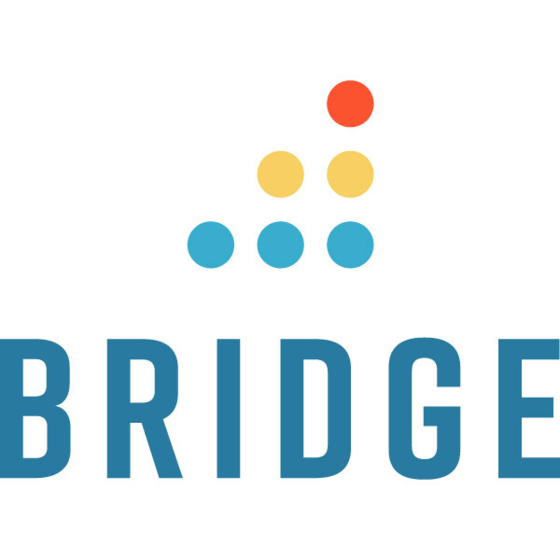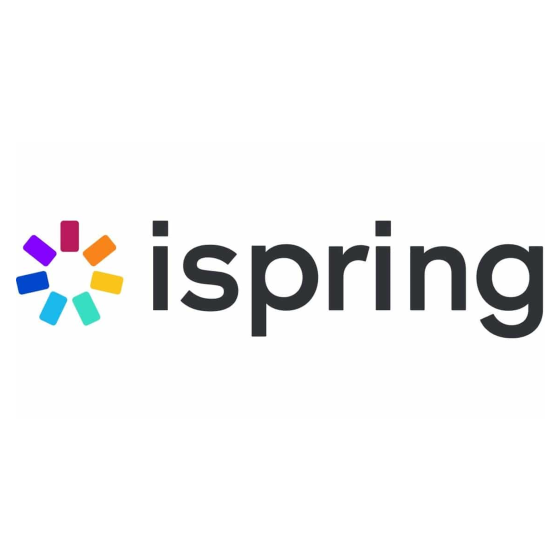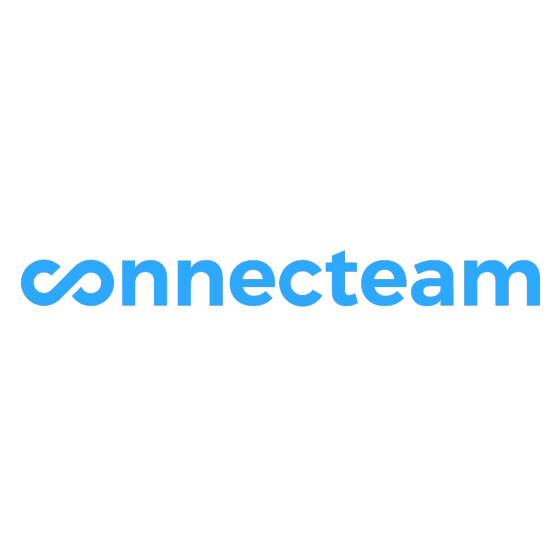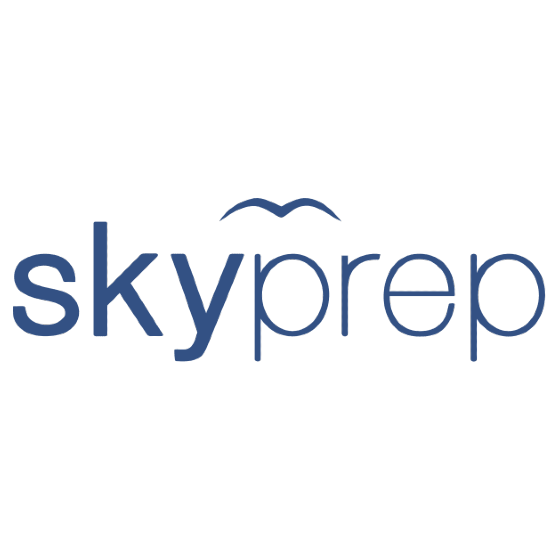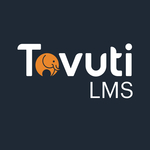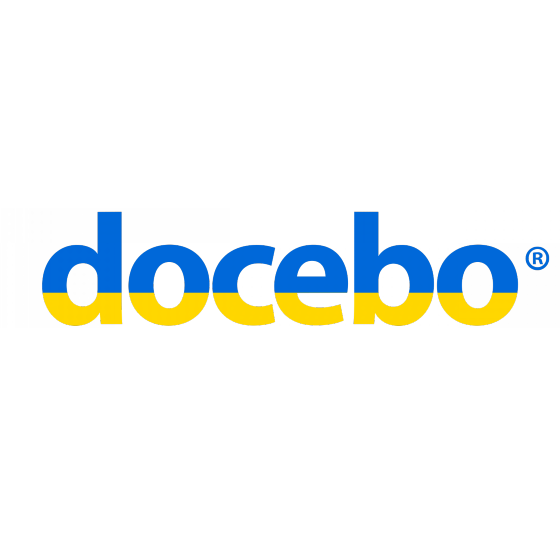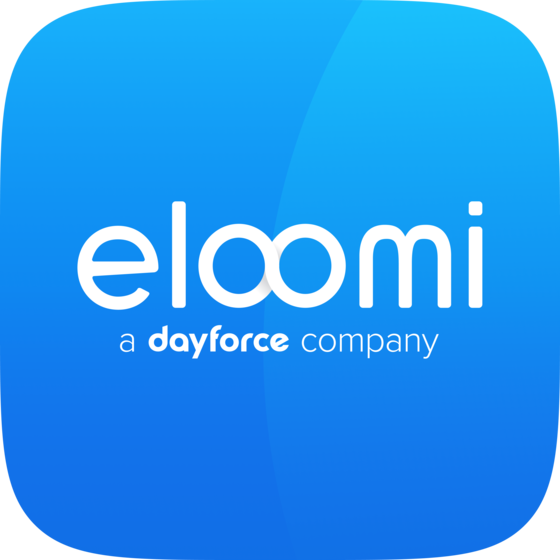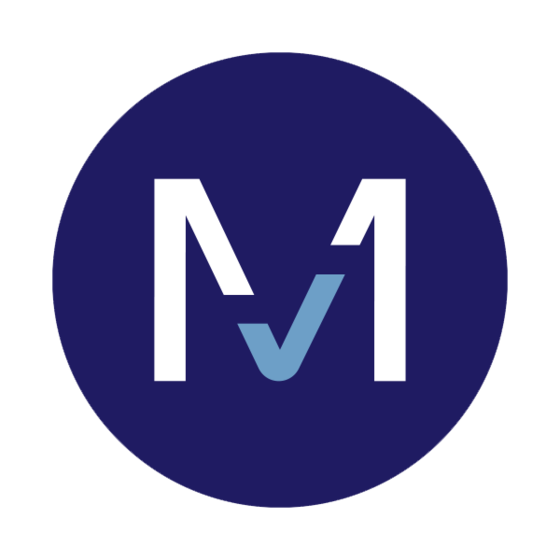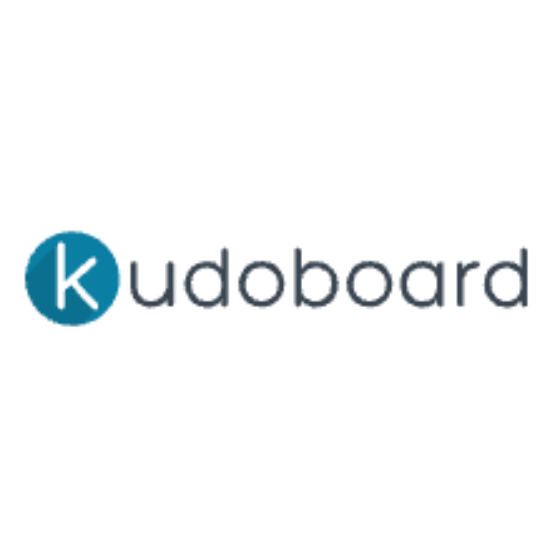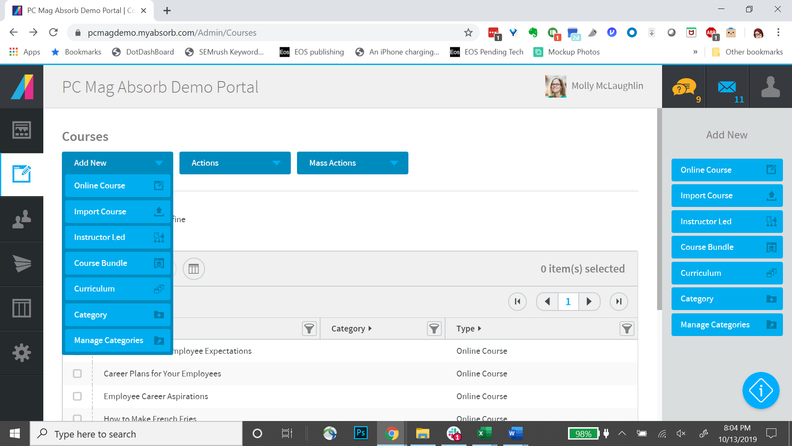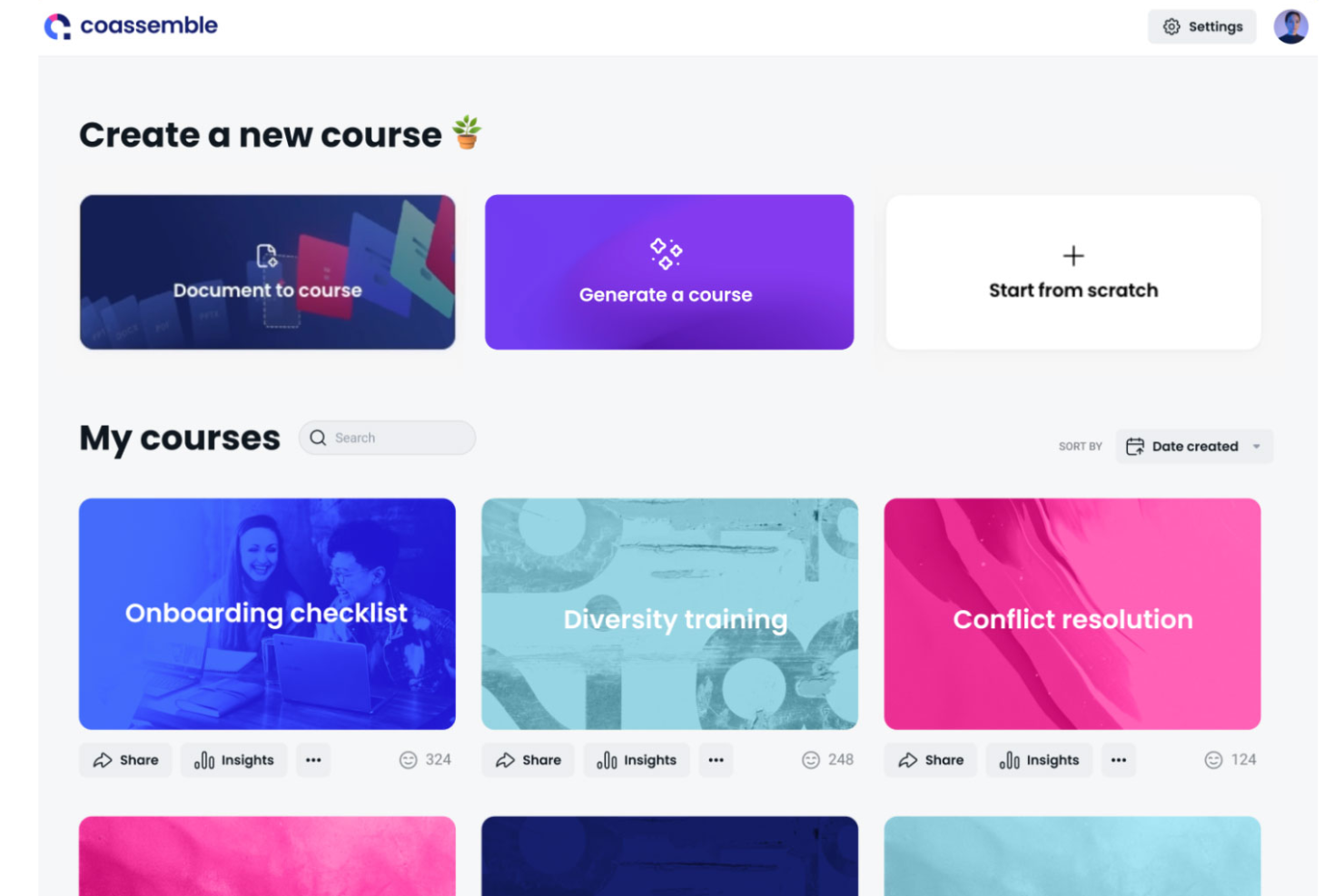20 Best Learning Management Systems Shortlist
Here's my pick of the 20 best software from the 30 tools reviewed.
The best learning management systems (LMS) help HR professionals and L&D specialists deliver engaging, trackable, and efficient training programs.
If you’re struggling with clunky tools, scattered spreadsheets, or limited visibility into learner progress, the right LMS can centralize your training efforts, automate repetitive tasks, and give you the insights you need to improve outcomes across your organization.
Modern LMS platforms let you create and launch courses faster, personalize learning paths to keep employees engaged, and monitor compliance or performance goals—all while reducing administrative workload. The challenge? With so many platforms and features to compare, it’s easy to feel overwhelmed or unsure which solution truly fits your needs.
With 8+ years of hands-on experience running an internal learning and development program, plus 3+ years of analyzing numerous LMS systems, I've seen what works (and what doesn't) from both an HR and training perspective.
In this guide, I’ll share my top picks for the best learning management systems based on hands-on experience, so you can find a platform that supports your people, aligns with your goals, and delivers measurable results.
You Can Trust Our Software Reviews
We've been testing and reviewing HR software since 2019. As HR professionals ourselves, we know how critical and difficult it is to make the right decision when selecting software.
We invest in deep research to help our audience make better software purchasing decisions. We've tested more than 2,000 tools for different HR use cases and written over 1,000 comprehensive software reviews. Learn how we stay transparent, and take a look at our software review methodology.
Best Learning Management Systems: Comparison Chart
This comparison chart summarizes pricing, trial, and demo details for my top learning management system selections to help you find the best system for your budget and business needs.
| Tool | Best For | Trial Info | Price | ||
|---|---|---|---|---|---|
| 1 | Best for integrated performance and learning | Free trial + demo available | From $29/month | Website | |
| 2 | Best for auto-enrollment | Free demo available | Pricing upon request | Website | |
| 3 | Best for advanced course authoring | Free demo available | Pricing upon request | Website | |
| 4 | Best for customizable LMS needs | Free demo available | Pricing upon request | Website | |
| 5 | Best for AI-powered smart features | Free trial + free demo | Pricing upon request | Website | |
| 6 | Best for authoring and tracking capabilities | Free trial + demo available | From $3.70/user/month (billed annually) | Website | |
| 7 | Best on-the-go training for frontline employees | 14-day free trial + free plan available | From $29/month (for up to 30 users, billed annually) + $0.5/user/month for each additional user | Website | |
| 8 | Best for personalized customer support | 14-day free trial | Pricing upon request | Website | |
| 9 | Best for its course builder | Free trial + free demo | From $50/month | Website | |
| 10 | Best for industry-specific training compliance | Free demo available | Pricing upon request | Website | |
| 11 | Best for creating virtual classroom experiences | Free demo available. | Pricing upon request | Website | |
| 12 | Best for cohort-based learning | Free trial available | From $89/month (billed annually) | Website | |
| 13 | Best for AI course creation | Free demo available | Pricing upon request | Website | |
| 14 | Best for automated development journeys | Free demo available | Pricing upon request | Website | |
| 15 | Best for healthcare-specific courses | Not available | Pricing upon request | Website | |
| 16 | Best for social learning features | 14-day free trial + free plan available | From $49/month (25 licenses) | Website | |
| 17 | Best for managing employee training | 14-day free trial available | From $1,800/year (up to 25 users) | Website | |
| 18 | Best for hosting courses through WordPress | Not available | From $199 one-site license | Website | |
| 19 | Best for skills-based development programs | 30-day free trial | From $45/user/month | Website | |
| 20 | Best for certification‑focused training | 45-day free trial | From $110/month (5 users) | Website |
-

Kudoboard
Visit WebsiteThis is an aggregated rating for this tool including ratings from Crozdesk users and ratings from other sites.4.8 -

Rippling
Visit WebsiteThis is an aggregated rating for this tool including ratings from Crozdesk users and ratings from other sites.4.8 -

Paylocity
Visit WebsiteThis is an aggregated rating for this tool including ratings from Crozdesk users and ratings from other sites.4.5
Best Learning Management System Reviews
The best LMS platforms don’t just deliver training—they elevate it. Below, you’ll find my top 10 picks, each handpicked for its unique strengths, from standout features to ideal use cases. I’ve included a quick summary, interface screenshots, and bonus recommendations at the end to help you explore even more great tools.
Deel Engage is an all-in-one talent development platform designed for businesses seeking to enhance their employee training, performance management, and career development processes.
Why I picked Deel: I like that Deel bridges the gap between training, performance, and career development with its platform. It offers a comprehensive suite of tools, including an intuitive learning management system, AI-powered career progression frameworks, and customizable performance reviews.
I especially like the software's AI capabilities, which allow users to quickly build engaging courses using drag-and-drop tools, and integrate elements like images, quizzes, and tasks.
Additionally, its automation features enable automatic assignment of courses based on criteria such as start dates and department roles, ensuring consistent and timely training delivery without manual intervention.
Deel Standout Features & Integrations
Standout features include its customizable performance review system that offers 360° feedback and advanced analytics, such as heatmaps and 9-box grids, to identify skill gaps and track employee progress effectively.
Additionally, the platform’s career development tools help define clear career paths and competencies, providing employees with a motivating roadmap for their growth.
The platform also includes advanced tracking capabilities with pre-built dashboards, allowing managers to monitor course progress and completion rates in real time.
Integrations include various HR systems and tools, like Workday, BambooHR, and Personio. It also integrates with Slack and offers custom integrations through its Open API.
Pros and cons
Pros:
- Integrates with Deel HR
- Training automation capabilities
- Drag-and-drop interface
Cons:
- Platform could have more customizations
- Learning curve for new users
New Product Updates from Deel
Introducing Deel AI Workforce
Deel has launched the AI Workforce, a set of specialized agents designed to handle repetitive HR, payroll, and compliance tasks with speed and accuracy. These AI agents don’t just assist—they execute tasks from start to finish. For more information, visit Deel's official site.
Mitratech Perform is a SaaS company that offers a suite of products to help you manage your various HR functions. One of those products is their learning management system (LMS), called Mitratech Perform Learn.
Why I picked Mitratech Perform Learn: I appreciate Mitratech Perform Learn’s auto-enrollment function, which helps expedite the course enrollment process when you have new employees to train.
Rather than enrolling employees individually, you can select a subset of courses (e.g., onboarding) and assign them to groups of employees, teams, or departments to be enrolled with a single click. The LMS then automatically sends out all the online learning materials to your learners by email.
Mitratech Perform Standout Features & Integrations
Features include course content creation tools that are some of the easiest to use and most versatile in the industry. Users can create not just simple course content, but also multimedia content, with gamification, quizzes and assessments, and other unique options.
The reporting and compliance features allow HR teams to conduct document compliance training, as well as evaluate departmental success and monitor progress across the entire workforce.
Another standout feature of this platform is that it can be purchased together with the other HR tools offered by Mitratech Perform. The company has an applicant tracking system (ATS) for recruiting new hires, a performance management platform for nurturing your existing workforce, and a workforce analytics tool to help you measure the output of your HR initiatives.
This makes it a modular and scalable solution, depending on the needs of your business.
Integrations include ADP Workforce Now, ej4, Paylocity, BambooHR, GoToWebinar, Ramco, Shopify, UKG Pro, Zoom Webinars and many single sign-on (SSO) applications.
Pros and cons
Pros:
- Easy to integrate SCORM content from third-party providers
- Training can be linked to employee performance goals
- One of a suite of HR SaaS products
Cons:
- Small list of pre-built integrations
- Pricing details and plan features are not transparent
Bridge is a learning management system (LMS) designed to help organizations deliver engaging training and development programs. It enables you to create, manage, and track learning experiences for employees, partners, and customers.
Why I picked Bridge: One reason I like Bridge is its advanced course authoring capabilities. You can design interactive and engaging learning content tailored to your organization's needs. This feature allows you to create courses that resonate with your team, enhancing their learning experience.
The system also includes tracking and analytics features, providing administrators with reporting tools to monitor course completion and engagement, therefore supporting data-driven decision-making. Bridge even supports skill development with access to a vast database of skills, helping organizations offer relevant content recommendations.
Another notable aspect is Bridge's performance management system. It integrates performance reviews, one-on-one meetings, continuous feedback, and goal tracking into the learning process. This integration ensures that learning and performance are aligned, helping your team apply new skills effectively.
Bridge Standout Features & Integrations
Standout features include a mobile app that lets your team access training materials on the go, ensuring learning isn't confined to the office.
The advanced media feature provides centralized file storage with video recording and editing tools, making it easy to create and manage multimedia content.
Additionally, talent reviews and one-on-ones provide insights into employee strengths and development areas, enabling more targeted and effective training interventions.
Integrations include LinkedIn Learning, OpenSesame, Khan Academy, SlideShare, Slack, Dropbox, YouTube, Vimeo, Kaltura, Panopto, Credly, and Shopify.
Pros and cons
Pros:
- Integrates performance and learning
- Robust tools for creating and managing training content
- Offers various customization features
Cons:
- Creating initial content can be time-consuming
- Limited pre-made content
New Product Updates from Bridge
Bridge Report Club: Elevating Training ROI
Bridge introduces the Report Club for L&D professionals, offering expert consultation, custom reports, and more. For more information, visit Bridge's official site.
Synergy Learning is a specialized learning management software company that partners with organizations to create and customize meaningful and measurable learning experiences. They specialize in platforms like Totara and Moodle LMS, aiming to unlock the full potential of these systems for their clients.
Why I picked Synergy Learning: Its focus on customization means you can have a system tailored specifically for your organization. With Moodle LMS, for example, you get a flexible and scalable LMS, which lets you create and manage courses that enhance staff retention and compliance.
This is particularly useful if your organization has unique training needs or compliance standards to meet. Moodle Workplace takes things further by offering features designed for organizational training and development.
Totara, on the other hand, is about creating engaging learning experiences that boost productivity and performance. It supports every aspect of learning and talent management, which is great if you're looking for a system that educates and also manages talent effectively within your organization.
Synergy Learning Standout Features & Integrations
Standout features include managed hosting services that ensure your LMS is reliable and secure, consultancy and training services to help your team make the most of the platform, and bespoke development options that allow for further customization to meet specific requirements.
Integrations include HubSpot, Power BI, Google Apps, Microsoft Office 365, SAP, Oracle, Salesforce, Stripe, PayPal, and Zoom.
Pros and cons
Pros:
- Highly customizable learning management systems
- Offers managed hosting and consultancy services
- Client-focused approach ensures tailored solutions
Cons:
- May not be ideal for those looking for a quick-start solution
- Customization options may require additional development
Absorb LMS is a learning management system with smart administrative features, high quality learner engagement tools, and even ecommerce options to sell your custom built courses online.
Why I picked Absorb LMS: I chose this software for my list because of its powerful artificial intelligence (AI) capabilities. The system's AI can help you customize the learner experience for each employee. It can anticipate each employee's needs and connecting them to relevant training.
The AI can also support your day-to-day administrative tasks. You can give it simple or complex reporting requests, and it will carry out the work on your behalf. AI is also incorporated into the system's search capability, helping enhance your search results based on your historical choices.
Absorb LMS Standout Features & Integrations
Standout features include the platform's intuitive dashboard with multi-language support. The dashboard is in full accordance with WCAG 2.0 standards, making your online employee development program as inclusive as it is effective.
You can also set up customized learning experiences for different teams and departments within your organization, as well as for partners and other external learners.
The platform supports multiple learning use cases, including compliance-related learning and training, onboarding training, internal upskilling initiatives, and customer-focused training.
Integrations include ADP, BambooHR, ClearCompany, Dayforce, HubSpot CRM, Namely, Salesforce, Webex, Workday, Zendesk, Zoom, and single sign-on (SSO) applications.
Pros and cons
Pros:
- Great customer service
- Extensive customization options
- Robust pre-built templates
Cons:
- Resources lack a thumbnail feature
- Limited assessment features
New Product Updates from Absorb LMS
Absorb LMS Introduces Multiple Course Catalogs for Targeted eCommerce Marketing
Absorb LMS now supports separate course catalogs for eCommerce, enabling multiple public dashboards and targeted course marketing. For more information, visit the Absorb Help Center.
iSpring Learn is a learning management system with advanced features and a scalable pricing structure that makes them a great choice for enterprise organizations.
Why I picked iSpring Learn: The number of advanced features included in this platform are what landed it its spot on my list. It's highly customizable, and even has white-label branding so you can create a unified employee experience across it and your other tools. You can also have your training content translated into other languages using the localization feature.
The software is cloud-based and offers unlimited storage. But if you need the security of on-premise installation, it's available, too. These are all helpful features and functionalities for large-scale enterprise businesses.
iSpring Learn Standout Features & Integrations
Standout features include tools for boosting employee engagement in training programs, such as colorful badges, dynamic leaderboards, and gamification elements in your learning modules.
Another nice feature is the direct messaging tool and a designated Q&A section where learners and course authors can communicate on course material.
The software also offers unlimited administrator roles and helpful user management features such as training groups, user roles, and user invitations.
Plus, you can keep costs low by deactivating users who aren't frequent users so you're only paying for active users. (Deactivated learners will still have their progress data saved, but you'll have to reactivate them again once they need to log back into the system.)
Integrations include ADP, BambooHR, Salesforce, Microsoft Teams, Power BI, Workday, Udemy, Zoom and others. Additional integrations can be configured using their REST/SOAP API.
Pros and cons
Pros:
- Well-suited for processes that require extensive training
- 360-degree feedback feature
- Flexible and versatile to suit various training and learning needs
Cons:
- Complicated pricing structure (many modules and add-on options)
- Limited native software integrations
Connecteam is a workplace software provider that offers platforms for training management as well as internal communications and operations for deskless employees.
Why I picked Connecteam: The training management platform provides the tools you need to build, manage, and track your employee training initiatives. However, I included it in my list because of its unique features that create a more engaging training experience for your staff.
You can create fully customized video courses, even if you're not a technical expert or videographer. You can also add quizzes and evaluations to your training modules to ensure people are retaining the key takeaways.
Connecteam Standout Features & Integrations
Standout features of this software include the mobile app, which allows employees to do their training from their mobile device. The training platform (part of their HR & Skills product) also includes employee recognition and rewards, so you can give meaningful recognition when people complete their trainings.
The platform includes compliance features that make it easy to match training with new policies and procedures to prove employees have mastered the new information. You can also export your mandatory training data, as needed, as proof of your corporate compliance (a big plus for safety-sensitive industries).
Finally, another great feature is all the pre-built templates, including industry-specific and topical training modules that are available for you to use.
Integrations include Paychex, Xero, Gusto, QuickBooks Payroll (online + desktop), Google Calendar and others.
Pros and cons
Pros:
- Tracks training progress per employee
- Does not require technical expertise
- Keeps an updated database of all courses created
Cons:
- Complex pricing structure
- Integration details are limited
SkyPrep is a powerful learning management system (LMS) that helps organizations train their employees, customers, and partners with ease.
Why I picked SkyPrep: I included SkyPrep because it's well-known for its best-in-class customer support. Every client on a paid plan is paired with a dedicated and knowledgeable Customer Success Manager who creates a personalized action plan to help you get the most out of their LMS system.
Whether you're looking for an LMS to onboard employees, train customers on your products, keep up with compliance requirements, or sell your courses online, you'll be well-supported along the way.
SkyPrep Standout Features & Integrations
Some of the software's standout features include role-based training workflows and individual client portals. With these tools, you can craft more personalized learning experiences for your audience. You can also add custom branding to the platform, giving it a familiar feel for employees, clients, or partners.
Integrations include ADP, BambooHR, BigBlueButton, Ceridian Dayforce, Cisco Webex, ClickMeeting, Google Suite, GoToMeeting, Microsoft Teams, Office 365, Paylocity, PayPal, Salesforce, Shopify, Stripe, UKG Pro and Zoom.
You can also access additional custom integrations using their API, or by connecting a paid Zapier plan.
Pros and cons
Pros:
- Excellent course authoring tools
- Easy to set up & learn
- Ability to craft personalized learning experiences
Cons:
- Automatic video captions locked to highest paid plan
- Pricing is not transparent
Coassemble is a versatile Learning Management System (LMS) that integrates course authoring tools and LMS functionalities into one platform. It allows users to create engaging and interactive online training programs with ease, utilizing a variety of templates and drag-and-drop features.
Why I picked Coassemble: Coassemble has an intuitive course builder, which allows users to create engaging, customized, and impactful courses without any coding knowledge. The platform offers a comprehensive library of customizable templates, themes, and multimedia assets, enabling educators to tailor their courses to reflect their unique brand and teaching style. This level of customization ensures that the learning experience is immersive and resonates well with the audience.
Another significant feature of Coassemble is its AI Assistant, which streamlines the creation of quizzes and assessments. This tool aligns assessments with learning outcomes instantly by pulling information directly from the course content, ensuring that learners are tested on what matters most.
Coassemble Standout Features & Integrations
Standout features include a powerful analytics dashboard that provides deep insights into user engagement, completion rates, and quiz scores, allowing educators to enhance learning outcomes effectively. Additionally, Coassemble's AI course generator allows users to create microlearning courses using artificial intelligence, making course creation efficient and engaging.
Integrations include QuickBooks Online, Stripe, Salesforce, Microsoft 365, Mailchimp, Google Analytics, WordPress, GoTo Meeting, LinkedIn, Zapier, Shopify, Google Calendar, Google Workspace, and PayPal.
Pros and cons
Pros:
- Various interactive features
- Custom feedback and reporting options
- Offers a variety of templates and tools for easy course creation
Cons:
- Some users may face a learning curve when creating more complex courses
- Could offer more customization options
Kallidus Learn is a user-friendly training platform designed to help organizations deliver and manage effective employee learning programs at scale. It serves teams in various industries by supporting compliance training needs and professional development.
Why I picked Kallidus Learn: I chose Kallidus Learn because of how quickly you can get your training programs up and running. The platform includes over 100 ready-to-go courses you can use to launch corporate training at your company quickly.
It also offers industry-specific compliance training for key sectors, including construction, manufacturing, consumer services, finance and accounting firms, and healthcare.
Kallidus Learn Standout Features & Integrations
Standout features include blended learning formats (a combination of online, in-person, video, and social learning), plus tools to create segmented course content for each user (or groups of users) to create a more personalized learning experience.
To ensure training compliance, the system also has an auto-assign and reminder feature that sends personalized follow up emails to any employee who hasn't completed their training, to keep your company compliant. The tool also provides customizable reporting tools to monitor training completion and identify gaps.
The platform also supports mobile learning, making it easy for employees to access training from any device.
Integrations include Meta for Business, Microsoft Office, Natural HR, Rewards Gateway, Tazio, and Yammer.
Pros and cons
Pros:
- Support team is responsive and helpful
- Caters to all learning styles
- Easy back end management
Cons:
- Course catalogue can be challenging to navigate
- Notifications are not customizable
Tovuti is an LMS with plenty of useful features. You can easily create courses and lessons with assessments to measure progress. And your admin team can create reports to get all the data they need about course participation.
Why I picked Tovuti: The tool is white-label, meaning you can replace all the Tovuti branding with your own so it looks like your own technology. It also offers plenty of options for gamification which can help improve learner retention. You can hand out badges, create games, and highlight leaderboards to encourage participation.
You can create a virtual classroom to let participants learn together. It has video conferencing functionality so people can communicate and interact with each other. There is also a chatbox and the ability to share and make notes on learning resources. It’s a good way to create a blended learning experience that combines classroom and independent learning.
Tovuti Standout Features & Integrations:
Features include personalized experiences, resources on-demand, online course templates in a wide selection of themes, mobile-friendly training, rich interactive content, a whiteboard, participation controls, survey tools, session recording & sharing, end-to-end data encryption, single sign-on, and customer support that's available 24/7 + 365 days a year.
Integrations are available with Active Directory, ADP, Auth0, BambooHR, BizLibrary, Okta, OneLogin, Stripe, and Zapier. They also have an API to support additional custom integrations as well.
TeachFloor is a learning management system that provides a comprehensive suite of tools designed to enhance online education for both skills development and corporate training.
Why I picked TeachFloor: I like that TeachFloor features a user-friendly interface that allows instructors and trainers to create and manage cohort-based courses, combining asynchronous and synchronous lessons. This cohort-based setup is especially useful when onboarding multiple employees or training a specific team or department in a new skill.
The platform supports various multimedia elements, peer review functionalities, and community engagement tools, fostering a collaborative learning environment.
Additionally, it offers analytics for tracking student progress and customizable branding options for businesses.
TeachFloor Standout Features & Integrations
Standout features of this software include a robust curriculum builder for setting course timelines and uploading content, lesson scheduling for organizing classes on a calendar, and community spaces for trainee discussions.
The platform also offers features for automated reminders and notifications to help keep learners engaged and on track with training timelines.
Integrations include PayPal, Stripe, Microsoft Teams, Google Calendar, Zoom, Google Meet, Slack, Mailchimp, Zapier, YouTube, and Vimeo.
Pros and cons
Pros:
- Supports the management of different learning formats
- Easy-to-navigate platform
- Customization options
Cons:
- Reporting features could be more detailed
- Limited mobile experience
Docebo is an artificial intelligence (AI)-based learning platform that makes it easy for organizations to create custom learning journeys for their people. It includes an intuitive content creator and access to a wide library of existing courses and resources.
Why I picked Docebo: Their LMS system stands out due to its intuitive content creator tool called Shape. Shape uses AI to automatically create course materials based on your existing internal or external knowledge sources. For example, you can paste a blog post URL into the content generator and it will turn this into slides.
The content this tool generates is highly customizable so you can get it to match your exact needs. Once finished, you can translate it into multiple languages so anyone in your organization can benefit from the lessons.
Docebo Standout Features & Integrations:
Features include a multitude of content creation tools, workflow automations, custom domains, audit trails, gamification, certifications, social learning, mobile learning, and a customizable learning analytics dashboard with 20+ drag-and-drop widgets to track your key performance indicators (KPIs).
You can also supplement your own lessons with learning resources from Docebo’s content library. The library contains thousands of courses on a huge variety of business topics. It’s easy to import these into your company app so employees can access them on the go.
Integrations are available natively with 400+ software systems through the Docebo Connect Integrations Marketplace, including Adobe Connect, BambooHR, BigCommerce, Eventbrite, GoToMeeting, HubSpot, Mailchimp, Microsoft Sharepoint, Okta, PayPal, SAP SuccessFactors, Slack, Wordpress, Zoom, and many other systems.
eloomi is a learning management solution that helps you create training content and makes it simple for employees to access their courses.
Why I picked eloomi: eloomi lets you import your existing online learning content into the eloomi system or create new courses using its custom course builder. For example, you can create specific learning tracks for specific needs like onboarding or compliance training.
Moreover, you can create automated development journeys, which leverage AI to automatically adjust learning content and pace, ensuring that each employee receives the most relevant and effective training experience for their development goals.
The platform additionally features an extensive library of courses and content, ranging from technical skills to soft skills training, all designed to support comprehensive professional growth.
With a strong focus on upskilling, Eloomi also provides tools to track employees current skills and determine the skills they need to both achieve their personal goals and better serve the company, as well as tools to track employee course completion.
eloomi Standout Features & Integrations
Standout features include customizable performance management templates that enable organizations to conduct effective employee evaluations, set clear performance goals, and track progress over time. These templates are designed to facilitate meaningful conversations between managers and employees, focusing on growth and development.
Additionally, Eloomi's advanced reporting features provide real-time insights into individual and team performance metrics, highlighting skill gaps, tracking learning outcomes, and measuring the impact of training initiatives on overall performance.
Integrations include Workday, Google Drive, ADP Workforce Now, Salesforce, Sage, and SAP SuccessFactors.
Pros and cons
Pros:
- Facilitates a continuous performance management process
- Offers data-driven insights
- User-friendly interface
Cons:
- May be too complex for small teams
- Steep initial learning curve
MedTrainer is a learning management system built for the healthcare sector. It combines education, credentialing, and compliance in a single platform, making it easier for you to manage training and regulatory standards without juggling separate tools.
With a library of over 1,000 healthcare-specific courses and tools to support continuing education, CPR/BLS, and onboarding, MedTrainer is purpose-built for clinical environments that demand accuracy, audit-readiness, and staff preparedness.
Why I picked MedTrainer: I chose MedTrainer because of how well it fits the unique needs of healthcare teams. You get access to specialized course content, but also the flexibility to create your own—so you’re not locked into generic modules that don’t apply to your facility.
The onboarding paths stand out too; they help you bring new staff up to speed on procedures, compliance expectations, and internal protocols right away. If you’re in an environment where compliance is more than just a checkbox, this platform gives you the structure and tracking you need.
MedTrainer Standout Features & Integrations:
Features include smart course suggestions based on learner roles and requirements. You can integrate your existing training materials, assign credentialing tasks, and get reporting that reflects exactly where your team stands, without needing to dig.
The policy and document management features are also useful when you need to confirm whether team members have reviewed the latest updates.
Integrations include ADP Workforce Now and UKG Ready.
Pros and cons
Pros:
- Credentialing automation
- Extensive library of training courses
- Incident reporting available
Cons:
- Incident management features may need enhancement
- Difficulties in editing or customizing website elements
WeSchool is a learning management system (LMS) that guides businesses and educational institutions to create effective in-person and online courses, training programs, and other learning activities. It's suitable for businesses and educational institutions of all sizes and can be easily customized to fit the specific needs of each organization.
Why I picked WeSchool: I chose WeSchool because of its social learning features that make for a more dynamic learning experience. This includes a wall where you can post announcements, carry out discussions, and provide an overview of upcoming training and activities.
The built-in chat tool also allows for real-time, collaborative learning experiences, rather than keeping training independent. Conversations can also be conducted around course materials, promoting peer engagement and collective learning.
WeSchool Standout Features & Integrations
Standout features include the custom branding options in the platform. You can personalize the look and feel of your virtual learning environment to match your organization's branding and create a sense of familiarity. You can also design your own certificates for course completion to include your own company branding too.
Another nice feature is the variety of assets you can include in your course content. From links, videos, PDFs, audio, or documents, creating engaging and interactive courses is as simple as using their drag-and-drop features. Instructors can easily create and manage courses, upload or embed content directly into the platform, and set up quizzes and assessments to ensure people are retaining the information.
You can use real-time data — including the total number of training materials completed and the average time spent on individual assessments — to improve training experiences by understanding how users are engaging with your content.
The platform also offers a variety of communication touchpoints, including a discussion forum, private messaging, conversations centered around content materials, and a mobile app for learning on the go. These features enhance collaboration among users, ensuring a smooth and engaging learning experience.
Integrations include Single Sign-On, Google Meet, Microsoft Teams, Zooms, and Webex as well as other video conferencing tools.
Pros and cons
Pros:
- Suitable for both corporate and learning environments
- Lots of collaborative tools for collective learning
- Intuitive, drag-and-drop course builder
Cons:
- Free plan is limited to educational institutions only (university and K-12)
- Live sessions not included in the basic plan
Workleap LMS is an intuitive learning management system designed for employee training and development. It offers a platform where companies can create, deliver, and monitor training programs tailored to individual or team needs.
Why I picked Workleap LMS: The platform allows companies to create interactive courses using multimedia elements, enhancing engagement and learning retention. Additionally, the learning paths feature ensures that employees follow a customized training journey, catering to their specific roles or objectives.
Another highlight is the certification and evaluation functionality, which automates assessments and certifications. This ensures that employees meet required standards without requiring manual oversight.
Workleap LMS Standout Features & Integrations
Standout features include a robust knowledge management system that helps centralize company information, making it easy for employees to access and share knowledge. Its simplicity in implementation allows for quick setup, and the platform offers built-in collaboration tools to foster communication between learners and instructors.
The built-in analytics and reporting tools also provide real-time data, enabling administrators to monitor learner progress and make data-driven decisions.
Integrations are available with 50+ popular HRIS systems including ADP Workforce Now, BambooHR, Dayforce, Factorial, Freshteam, HiBob, Keka, Namely, Paycor, Sage HR, SAP SuccessFactors, TriNet, UKG Pro, Workday, and many others.
Pros and cons
Pros:
- Tailored learning paths for individuals and teams
- Easy course creation
- User-friendly interface
Cons:
- No learner collaboration tools
- Can be expensive for small teams
LearnDash is an LMS platform that lets you create your own courses on WordPress websites. It’s mainly used by creators who sell courses, but businesses who want to create their own courses for employees can also use it too.
Why I picked LearnDash: I included them in this list because they offer a unique option to host courses (and monetize them) off of an existing WordPress website. This makes them a good choice for any professional firm that wants to supplement their main revenue streams by hosting some online courses on the side. Basically, it's a great platform to generate passive income using training content you already have and own.
It’s easy to get started by installing the software on your WordPress site. The tool has all the features you’d expect from a corporate LMS including the ability to create multiple courses and structure them to your needs.
LearnDash Standout Features & Integrations:
Features include drag-and-drop course building tools, advanced quiz and assessment options, dynamic content (e.g., drip feed lessons or linear progression paths), course prerequisites, badges and certificates, leaderboards, discussion forums, assignments, detailed reports and analytics, and group management tools.
Integrations are available natively with eCommerce platforms and other popular tools such as BuddyPress, ConvertKit, Easy Digital Downloads, Gravity, MailChimp, PayPal, Slack, Stripe, WooCommerce, and Zapier.
They also have a REST API to support any other custom integrations you may need too.
Skillsoft is a learning management platform designed to help organizations create leadership and development programs at scale.
Why I picked Skillsoft: Their system comes with a deep library of leadership-focused educational material that is cloud-based, meaning your staff can easily access the material any time, including from mobile devices.
In addition to their leadership and development focus, they also have a valuable tool to help you run skill assessments for your entire workforce. This feature - called Percepio - works by inviting key staff to complete skill-based assessment questionnaires focused around key competencies.
Based on their quiz scores, Skillsoft will then take the next step and recommend the next training courses each employee should pursue within their library of pre-build courses.
Skillsoft Standout Features & Integrations:
Features include a library of 7,000 courses covering business topics like leadership development, digital transformation, DEI (diversity, equity and inclusion), engineering, programming, project management, security, and compliance.
If you have specific needs, you can also host your own learning content within the platform, or you can add courses from external providers like YouTube or Coursera. Other features include digital badges, learning impact analytics, multimedia content, and sequenced learning paths.
With so many courses to choose from, it may seem overwhelming, but Skillsoft has tools that help guide employees on their own personal learning journey. Your people can choose from hundreds of curated learning paths and highlight topics they are interested in to receive custom recommendations.
Integrations are available natively with 360Learning, Cornerstone, Degreed, Microsoft 365, Moodle, Saba, SAP SuccessFactors, SumTotal, and Workday.
Moodle Workplace is a learning management system designed for corporate and organizational training. It helps you run employee training, onboarding, certifications, and compliance programs all in one platform.
Why I picked Moodle: Moodle Workplace offers the ability to define programs where you can bundle courses, certifications, or learning paths for specific roles or objectives. Within these defined programs, you have the option to build and manage certifications with clear start and expiration dates, which is great if you need to keep your team compliant or track qualifications that must be renewed over time.
It supports multi‑tenancy — you can set up multiple “workspaces” or sub‑environments for different departments, regions, or clients, each with its own branding, user base, and learning rules. That means you can manage diverse learning needs without mixing everything in one.
Moodle Standout Features & Integrations
Features include certification management, which lets you issue, renew, and track certifications for learners so that compliance or professional credential requirements are met. Another feature is reporting & analytics, giving you data on learner progress, completion rates, and program effectiveness so you can make informed decisions.
Integrations include Google Meet, WordPress, Discord, WooCommerce, Mailchimp, ActiveCampaign, Google Sheets, Stripe, Microsoft Dynamics 365 CRM, Facebook Messenger, Jotform, and Eventbrite.
Pros and cons
Pros:
- Supports multiple workspaces with distinct branding
- Lets you track learner skills over time
- Enables custom certification renewals and validity periods
Cons:
- More of an outdated user interface than others
- Some features depend on admin role complexity
Other Learning Management Systems
Here are a few more options that didn’t make the best learning management systems list. They’re also great products and solid options if the LMS systems above didn’t satisfy all your needs:
- Constructor Tech
For employee, partner, and customer training
- D2L Brightspace
For turning data into training decisions
- Blackboard Learn
For competency‑based training models
- Canvas LMS
For corporate training analytics
- BetterUp
For access to quality coaching
- Learn Amp
For tailored learning pathways
- Sana Learn
For collaborative authoring tools
- Hone
For leadership training
- Eduflow
For peer-to-peer feedback
- Leapsome
For its learning content library
Related HR Software Reviews
If you still haven't found what you're looking for here, check out these other related tools that we've tested and evaluated:
- HR Software
- Payroll Software
- Recruiting Software
- Employer of Record Services
- Applicant Tracking Systems
- Workforce Management Software
Selection Criteria for Learning Management Systems
Selecting the best learning management systems for this list requires a deep understanding of internal learning & development (L&D) and internal training processes, and how common pain points can be alleviated by choosing the right system.
Drawing on my personal experience as an L&D support person — where I organized internal and external training, maintained training and compliance records, and prepared our training-related statistics — I was able to pinpoint the LMS features that add the most value for users on both sides of the table.
Using my experience to guide my final selections, I examined each system in fine detail, using the key criteria below as my framework:
Core Learning Management System Functionalities (25% of total score): To be considered for inclusion in my list of the best learning management systems, the LMS solution had to offer the following basic functionalities first:
- User-friendly course templates and multimedia content creation tools to create internal training materials from scratch
- A pre-loaded course content library that staff can access according to their preferences
- An intuitive user interface (UI) that makes a positive and engaging connection with your active users to create a positive user experience (UX) for them
- Learner reports and analytics that document individual progress, measure overall engagement and assist with compliance management
Additional Standout Features (25% of total score): To help me narrow in on the best employee engagement software out of the numerous options available, I also took note of any unique features, including:
- AI-driven content recommendations or advanced analytics capabilities
- Innovative engagement features such as personalization, gamification, or social learning capabilities
- Tools to customize learning experiences and create tailored learning paths for your employees based on their role or personal interests
- Automatic compliance-tracking features for easy oversight of required or mandatory training, including certification expiry dates
- The ability to support offline learning via mobile devices, for when your employees are off the grid
Usability (10% of total score): To evaluate the usability of each LMS, I considered the following:
- An intuitive design and user interface, with a minimal learning curve to master
- Clear and straightforward content organization, including the ability to create content libraries through drag-and-drop tools
- A good balance between powerful features and ease of use to accommodate all skill levels and create a positive user experience
- Either dedicated mobile apps or a mobile-friendly user interface that supports flexible learning on both Android and iOS mobile devices
- Role-based access controls that are straightforward to configure
The best HR tools are those that meet employees where they are. Whether it’s a learning platform that personalizes development plans or a pulse survey tool that adapts to team-specific needs, the focus should always be on usability and impact.
Onboarding (10% of total score): To get a sense of each software provider's customer onboarding process, I considered the following factors:
- A streamlined setup process and clear configuration guidelines
- The availability of training materials such as videos or interactive tutorials
- Customizable templates to speed up the onboarding process
- Support for migrating employee data into the new platform
Customer Support (10% of total score): To evaluate the level of customer support each vendor offered, I considered the following:
- The availability of multiple support channels, including email, phone, and chat
- The existence of a self-service knowledge base or other self-help resources to speed up troubleshooting
- The overall quality, responsiveness, and helpfulness of the support team during customer onboarding and post-purchase, as inferred from customer reviews
Value for Price (10% of total score): To gauge the value of each software, I considered the following factors:
- The availability of free trials or demos to test the software before purchasing
- Competitive and transparent pricing models that reflect the software's feature depth and explain which features are included at each level
- Tiered pricing plans that cater to different business sizes, from small to medium-sized businesses (SMBs) up to enterprise-level organizations
Customer Reviews (10% of total score): Evaluating customer reviews is the final element of my selection process, which helps me understand how well a product performs in the hands of real users. Here are the factors I considered:
- Whether a product has consistently high ratings across multiple review platforms, indicating a broad level of user satisfaction
- Specific praises, criticisms, or trends in customer feedback that indicate the software's strengths or areas for improvement
- Whether customer feedback specifically mentions issues with ease of use, customer support responsiveness, or lacking features
Using this assessment framework helped me identify the learning management systems that go beyond basic requirements to offer additional value through unique features, intuitive usability, smooth onboarding, effective support, and overall value for price.
Tools like LMS systems are great, but don’t rely on them to solve your learning challenges. Focus on what problems you’re solving for your organization and ensure tools are tied to measurable outcomes—like productivity, promotions, or better management skills.
How to Choose a Learning Management System
A learning management system can help you centralize your internal learning resources and create more flexible learning experiences for your employees, based on their needs.
To choose an LMS that best fits your needs, you need to pinpoint your key users and document their specific challenges first.
As you work through your own unique LMS software selection process, keep the following points in mind:
- What problem are you trying to solve? Start by identifying the challenges you're trying to overcome. This will help you clarify the features and functionality the learning management system needs to provide.
- Who will need to use it? To evaluate cost and requirements, consider who will use the software and how many licenses you'll need. For a learning management system, you'll likely want access for your entire workforce, with special access for your HR administrators and managers. Once that's clear, it's also useful to rank the needs of your different users to identify the key priorities for your power users, managers, and employees, to ensure they're all met.
- What other tools it needs to work with? Clarify what tools you're replacing, what tools are staying, and the tools you'll need to integrate with, such as HR management systems, performance management systems, and communication tools like Slack and Microsoft Teams. You'll need to decide if the tools will need to integrate together, or alternatively, if you can replace multiple tools with an all-in-one employee learning & development platform.
- What outcomes are important? Review the capabilities you want to gain or improve, and how you will measure success. For example, you may want to offer learning experiences in more flexible formats, gain stronger tools for progress tracking, or improve your compliance rates for internal training purposes. You could compare LMS features until you’re blue in the face but if you aren’t thinking about the outcomes you want to achieve, you could waste a lot of valuable time.
- How it would work within your organization? Consider the software selection alongside your existing workflows and systems. Evaluate what's working well, and any problem areas that need to be addressed.
Remember every business is different — don’t assume that a learning management system will work for your organization just because it's popular.
There’s a major shift coming with AI in L&D. While organizations may initially rely heavily on AI for training, success will depend on professionals who understand learning sciences and can evaluate AI outputs for effectiveness.
Trends in Learning Management Systems (LMS) for 2025
Employee training, upskilling, and cross-skilling are increasingly important as organizations feel the pressure to keep pace with emerging technologies and stay afloat in economically uncertain times.
Here are some of the ways these systems are evolving to better address the shifting needs of businesses and their workforce:
- Personalized Learning Paths: LMS platforms are increasingly using AI and machine learning algorithms to analyze user performance and preferences to tailor course content and offer personalized learning paths. This functionality addresses the challenge of diverse learner needs within organizations, enabling more targeted training that improves outcomes and learner satisfaction.
- Mobile Learning and Accessibility: With the rise of hybrid and remote working environments, mobile learning and enhanced accessibility features are becoming increasingly important. This trend addresses the need for flexible learning options that cater to employees working from various locations. Mobile-friendly LMS platforms ensure continuous learning and development, regardless of an employee's physical location.
- Gamification and Interactive Content: Novel and unusual features such as gamification and interactive content are gaining traction. These features make learning more engaging and enjoyable, leveraging competition and rewards to motivate learners. This approach addresses the challenge of learner engagement and retention, a common pain point for HR professionals.
- Microlearning and Bite-Sized Content: The shift towards microlearning reflects a growing understanding of attention spans and the need for flexible, concise training modules. This feature caters to the modern learner's preference for quick, digestible pieces of content that can be easily incorporated into a busy schedule or consumed easily on a mobile device.
- Advanced Analytics and Reporting: For leaders who aim to be strategic partners in their organizations, understanding the impact of learning initiatives is vital. Advanced analytics and reporting capabilities provide valuable insights into the effectiveness of your training programs, supporting a data-driven approach for making future program adjustments. These tools can help you monitor key metrics like:
- Training completion rates,
- Assessment and evaluation scores, and
- Engagement with various training modules.
This snapshot of LMS trends shows a clear focus on enhancing the learning experience and making the format and delivery of learning materials more accessible. As these platforms continue to develop, they promise to offer even more innovative solutions to meet the changing needs of learners and organizations alike.
What is a Learning Management System?
A learning management system (LMS) is a digital platform used to create, deliver, and track employee training and development programs.
LMS software helps HR and L&D professionals streamline onboarding, compliance, and upskilling by replacing manual processes with automated, centralized tools.
It solves common challenges like scattered training materials, lack of engagement, and difficulty measuring learning outcomes.
The modern LMS (Learning Management System) is evolving into a hub for tracking and managing learning paths. Leaders should prioritize tools with AI integrations, customizable learning pathways, and features that foster interactivity.
Features of Learning Management Systems
Learning management systems can do a lot of the heavy lifting when it comes to offering flexible learning environments, tracking learning progress, and supporting upskilling and employee development.
Here are the most essential features to watch for in LMS systems:
- Course Management Features: This includes a handful of useful tools such as personalization features, learning paths, and role-based course groupings that will help you curate the most relevant learning materials for learners at the individual, group, job function, or department level.
- Content Management Features: This includes tools for uploading and organizing multimedia materials into libraries, version control for course content, easy integration with external resources, and any other tools that make it easy to update and maintain course materials.
- Assessment and Competency Tools: These are tools that help you ensure that your employees are actually retaining the information they're learning. They include features like skill assessment questionnaires and spot quizzes that measure learning comprehension.
- Learner Engagement Features: Learner engagement features include things like training gamification, employee leaderboards with training scores, and internal communication tools that keep students engaged. Beyond that, some systems allow learners to collaborate within the LMS, ask questions & add comments, or encourage peer-based learning.
- Tracking and Reporting: Comprehensive tracking and reporting capabilities allow educators to monitor learner progress and engagement. This feature is indispensable for identifying areas where learners may need additional support, or for monitoring required or mandatory training for compliance purposes.
- Automated Alerts and Notifications: These features are especially valuable for organizations that have specific training requirements, such as those in safety-sensitive industries. With integrated alerts and notifications, your HR professionals won't have to chase down employees to complete any mandatory training. Instead, the system will do that work automatically on your behalf.
- Collaborative Learning Tools: You don't want your employees being trained in a silo. Instead, the best LMS systems include communication and collaboration features that support social learning, allowing employees to post questions or comments within an internal chat to spark engagement with other colleagues.
- Mobile Compatibility: A mobile-friendly platform ensures that learners can access materials anytime, anywhere. This feature is vital for accommodating the needs of learners who rely on mobile devices for their educational activities. (Make sure the LMS is compatible with both Android and iOS devices to ensure maximum flexibility for all your active users.)
- Customization and Branding: The ability to tailor the look and feel of the platform to match an organization's branding enhances the learning experience. Customization ensures that the LMS feels like a natural extension of the organization's educational offerings.
- Customer Support: Even though LMS systems are very straightforward and intuitive for the most part, you still want to know that the vendor you choose has your back if you need them. That's why I always double-check what kind of support a vendor offers, including customer support by phone, email, or chat.
If you'd like to dig into this more, read our advanced round-up of the best learning management system features next.
It’s not enough to report engagement metrics from an LMS. The real measure of success is how learning translates into on-the-job performance. Are employees solving problems faster? Are teams more aligned? Are managers growing their skills?
Benefits of a Learning Management System
A well-chosen learning management system can function as a cornerstone of your employee development and corporate training environment, giving you the tools you need to deliver, track, and manage your internal training programs.
Here are several benefits you can expect from implementing an LMS system:
- Centralized Learning Resources: LMS platforms house all learning materials in one location, making it easier for users to access and for organizations to manage. This centralization ensures that everyone has access to the same information and resources, streamlining the learning process, reducing redundancy, and providing a consistent learning experience for all users.
- Scalable and Flexible Learning: When using an LMS, businesses can easily scale their training programs to accommodate growth and adapt to changing learning needs. This flexibility supports continuous learning and development opportunities, catering to a diverse workforce with varying schedules and learning preferences.
- Enhanced Tracking and Reporting: LMS platforms provide advanced tools for monitoring user progress and measuring the effectiveness of training programs. This capability allows businesses to make data-driven decisions about how to improve and tailor their training initiatives, ensuring they meet their learning objectives and return on investment.
- Improved Learner Engagement and Retention: Interactive features, multimedia content, and personalized learning paths within LMS platforms engage users more effectively than traditional training methods. Enhanced engagement leads to higher retention rates, ensuring that learners not only complete their courses but also absorb and apply the knowledge gained.
- Reduced Training Costs: By reducing the need for physical materials, travel, and instructor-led sessions, LMSs offer a cost-effective alternative to traditional training methods. Organizations can allocate their resources more efficiently, by investing in high-quality online training that delivers measurable outcomes.
As you can see, investing in a learning management system isn't just about adopting new technology. It's about creating a learning culture that covers the needs of all learners, offers greater flexibility and analytics, and reduces operational costs, while streamlining learning processes to make them easily scalable.
By investing in an LMS, businesses can unlock the full potential of their workforce and drive operational success.
Costs & Pricing for Learning Management Systems
LMS providers typically offer a range of plans to accommodate the diverse needs and scales of organizations, from startups to large enterprises. These plans are designed to provide flexibility and scalability, ensuring that businesses can find an option that fits their specific training and development requirements.
Below is an overview of common LMS plan options and pricing to help you make an informed decision.
Plan Comparison Table for Learning Management Systems
| Plan Type | Average Price | Common Features |
|---|---|---|
| Free | $0 | Access to basic features, limited user count, and community support |
| Basic | $5-20 per user/month | Basic learning management features, reporting, and email support |
| Standard | $20-50 per user/month | Advanced analytics, customization options, integration capabilities, and phone support |
| Premium | $50-100 per user/month | Full feature access, dedicated support, advanced integration, and personalized training |
| Enterprise | Custom pricing | Custom features, enterprise-grade security, a personal account manager, and bespoke training solutions |
When selecting a plan, consider both your immediate and long-term organizational needs. While free and basic plans offer a good starting point for small teams and budgets, standard, premium, and enterprise plans provide the scalability and features to help large organizations fully optimize their training programs.
Here are several common scenarios for when you might want to opt for a more advanced LMS plan:
- Increased User Capacity: As your organization grows, the basic plan may not support the number of users you need. Upgrading ensures all employees can access the system without limitations.
- Customization Needs: Basic plans often come with limited customization options. Upgrading allows you to tailor the system to fit your company's unique training requirements and integrate your corporate branding elements.
- Compliance and Certifications: If your industry has strict compliance and certification requirements, advanced plans offer the necessary tools to ensure you meet these standards, including proactive certification renewal reminders. These features help avoid non-compliance issues and maintain professional standards without requiring a lot of manual involvement by your HR staff —definitely worth paying extra for if this applies to your organization.
- Advanced Reporting and Analytics: To track detailed progress and performance metrics, you may need the sophisticated reporting tools offered in advanced plans. This data can help you make informed decisions about your training programs to make them even more effective.
Ultimately, it's important to secure a plan that offers the features you require to satisfy your current needs and solve your challenges without exceeding your budget.
New & Noteworthy Product Updates
Below, I've summarized the most recent release notes and product updates for my top LMS recommendations. Discover what’s now possible through new service improvements, software features, and other company updates, and why it matters for employee learning and development.
2025 Q3: LMS Updates
Deel Update Notes
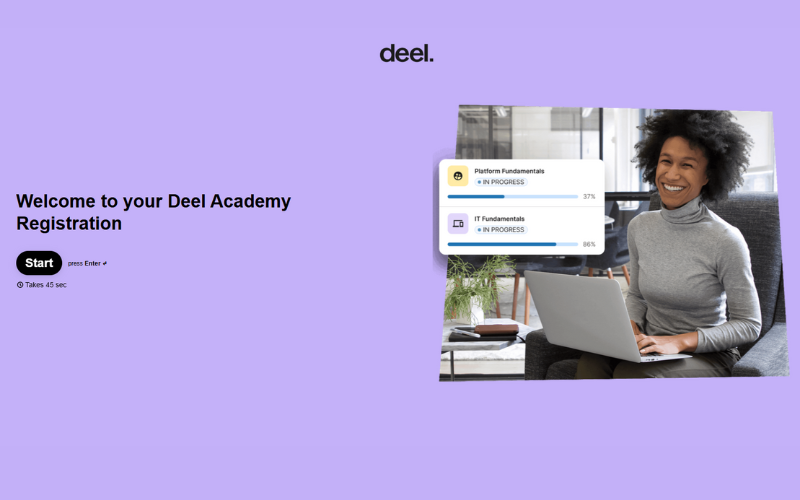
Deel recently expanded its learning tools to make training easier to access, track, and prove. The update adds new course content, automatic certificates, and badges for learners.
Deel now connects directly with OpenSesame, giving users instant access to more than 40,000 courses. Completion certificates are generated automatically in branded PDF format. Deel Academy also added badges tied to two learning tracks: “Fundamentals” and “Global Payments.”
The update makes training simpler to manage and easier to verify. Teams get a wider selection of courses without extra platforms. Certificates support compliance needs with less admin work. Badges keep learners motivated and provide proof of their skills.
Verdict: This update is a strong move that blends more choice, less admin, and greater learner motivation.
Absorb LMS Update Notes
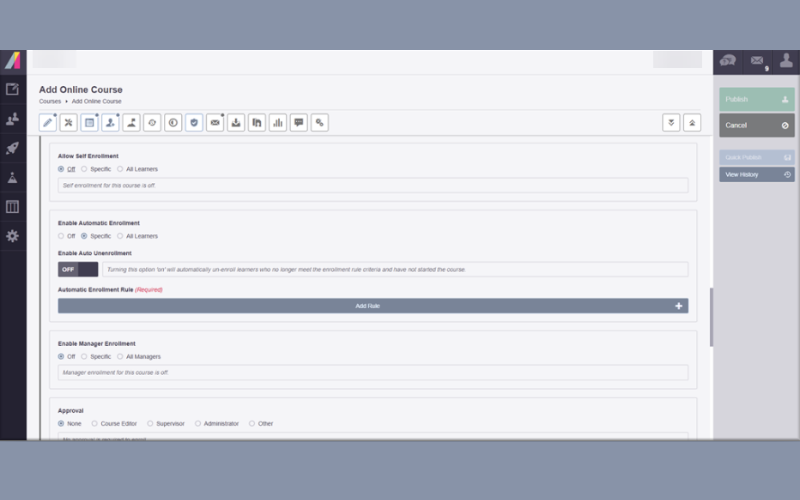
Absorb LMS released its Q3 2025 update (v5.125.0) on September 4. The release adds new AI tools, automation, and usability improvements across reporting, skills, mentorship, subscriptions, and course management. Features will roll out regionally from September 15 to September 30.
Key changes include live editing in Analyze for faster reporting, manual user assignments to subscriptions, new mentorship tools with matching and tracking, and automatic unenrollment from irrelevant courses.
Skills now use Lightcast’s taxonomy, with bulk tagging, imports, and LinkedIn Learning integration. Updates also add CRM sync, checklist transfer, custom tiles with video and CSS, and richer mobile and e-commerce options. Recent additions include scheduled enrollments, improved course conversions, new payment gateways, and stronger notification tools.
Admins save time through automation, bulk actions, and cleaner workflows. Reporting is more flexible and immediate. Learners get better mentorship support, clearer course relevance, and easier content discovery. With stronger integrations and richer content options, the platform becomes simpler, faster, and more adaptable for both admins and learners.
Verdict: The Q3 2025 update is a well-rounded release that delivers meaningful improvements in efficiency, integrations, and learning support.
iSpring Learn Update Notes
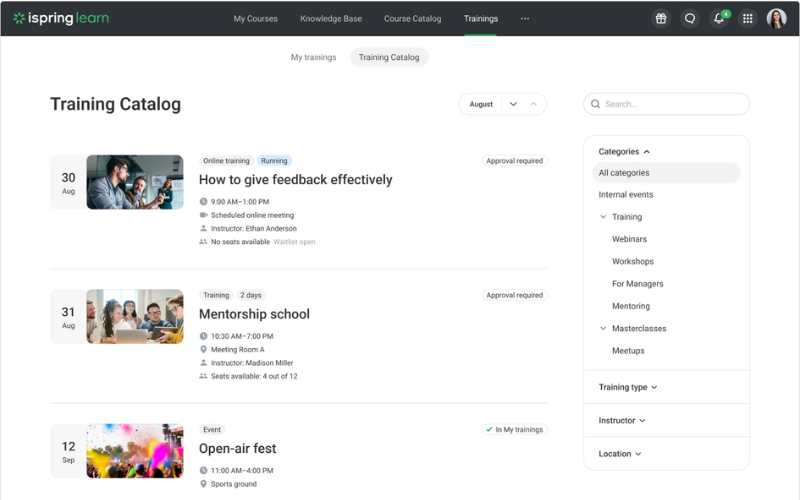
iSpring Learn's most recent update focused on enhancing the User Portal's organization and accessibility by consolidating related training features into one unified area. This refresh aims to improve how learners navigate and access training resources more intuitively.
A new Trainings section now combines the Training Catalog and My Trainings. Users can browse sessions, filter by date, and sign up directly from the catalog. The My Trainings view shows enrolled sessions on a clear calendar.
This change cuts clutter and makes training simpler to find and manage. Learners save time, and admins benefit from better engagement and completion because training is easier to track and join.
Verdict: By unifying training tools in one place, this update delivers real clarity and value.
Learning Management Systems: Frequently Asked Questions
Here are some answers to commonly asked questions you may have about learning management systems, how they work, and how they can add value to your internal HR learning and training initiatives:
How can I tell which LMS is right for my business?
Start by mapping your core learning objectives, technical requirements, and budget. Look for LMS tools that offer the features your team actually needs, such as content authoring, compliance tracking, or social learning. Request demos, ask for references from similar organizations, and include other stakeholders (like IT or compliance leads) in evaluations. The best fit solves your pain points and slots easily into your existing tech stack.
If you need help getting started, ask your team the following questions:
- What are your company’s learning needs?
- Will your training courses be instructor-led or will staff complete the course modules independently?
- Which elements of your current learning and development program are working, and which are not?
- What are your wish list features that you would really like to gain by purchasing a new LMS system?
- Are there any LMS features you don’t want or need?
- What is your realistic budget for purchasing an LMS system?
Consult with other members of your HR department to brainstorm these questions together. Once you’ve settled on your answers, you’ll have a better sense of the ideal type of learning management system for you.
Why is compliance monitoring an important part of LMS software?
Compliance tracking ensures your employees meet mandatory training and certifications. This helps you reduce legal risks and avoid fines. An LMS streamlines reporting, so you’ll always have proof of who’s completed what, which is especially helpful during audits or industry inspections.
Robust compliance monitoring features are essential if your organization operates in heavily regulated or high-risk industries where some training is legally required. Instead of manually chasing incomplete or expired training, your LMS will handle it for you—automatically sending reminders, flagging overdue courses, and generating compliance reports.
Can an LMS meet specific industry needs?
Yes, many LMS platforms offer industry-specific features and templates. For example, healthcare LMSs might include HIPAA training modules, while financial services tools have support for anti-money laundering regulations. When reviewing vendors, ask about prebuilt content, workflows, and integrations tailored to your industry’s challenges. This saves setup time and ensures you meet sector standards.
Do learning management systems support mobile learning?
Yes, almost all modern LMS solutions support mobile access, either through dedicated apps or responsive web design. This lets employees access training anytime—whether they’re in the office, on the floor, or working remotely. Make sure to test the mobile interface for usability and check if it works offline if you have workers in the field or with limited connectivity.
How do learning management systems engage learners?
LMS tools boost engagement with features like gamified quizzes, learning paths, multimedia lessons, and peer forums. You can set up rewards—badges, certificates, or leaderboards—to foster friendly competition. Interactive elements, social learning, and regular feedback help keep content interesting and promote knowledge retention. Consider surveying learners for their preferences to fine-tune your approach.
How do I measure the ROI of a learning management system?
You can measure the return on investment (ROI) of a new LMS by tracking both quantitative and qualitative results. Key metrics include:
- enrollment and completion rates
- time spent on training
- employee performance improvements, and
- reductions in compliance issues or training costs.
Compare these gains to your upfront and ongoing investment. In addition, it’s also important to collect feedback from managers and learners to identify additional value, like time savings or skill growth.
Can an LMS integrate with my HR or talent management software?
Yes, most enterprise LMS tools offer integration with HRIS, payroll, and talent management systems. Integration can automate onboarding, feed user data directly into learning modules, and centralize tracking for development plans or certifications.
Before you choose, confirm that the LMS supports your existing tools and ask about setup effort, data security, and ongoing support.
Are there different types of learning management systems?
Yes, there are several types of LMS platforms designed for different needs. Some focus on corporate training for employee development and compliance, while others support academic settings or partner/customer education. Smaller businesses usually prefer more affordably priced LMSs that focus purely on organizing training and tracking learner progress.
You’ll also find cloud-based, on-premises, and open-source options. Most LMS tools are cloud-based (SaaS), but if you have strict data security needs, a self-hosted solution might be a better fit. The right type for your organization depends on your audience, required integrations, IT policies, and industry needs.
What’s the difference between an LMS and a learning experience platform (LXP)?
An LMS is designed for top-down course assignment, compliance, tracking, and centralized reporting—ideal for structured training. A learning experience platform or LXP supplements or replaces this with a focus on personalized, user-driven learning: content recommendations, skill paths, and social features like forums or peer feedback.
Many L&D leaders use both: the LMS for compliance and required programs, and the LXP to promote ongoing, self-directed learning.
Other Learning & Training Software Reviews
With learning, training, and employee development already on your mind, you may also want to take a look at these other related software reviews too:
- Enterprise Learning Management Systems
- Learning and Development Certifications
- Employee Training Software
- Training Management Software for Skill Building
- Onboarding Software for Training New Hires
- Online Training Software for Internal Training
Use an LMS to Make Learning Easy
LMS tools are the easiest way to streamline your learning process and offer new learning resources to your entire organization. They'll help you easily create courses and share them with your teams, or access quality training resources from pre-existing course libraries. You just need to choose a platform that suits your needs.
Stay in Touch
To remain up to date on all the latest in people management, sign up for our free People Managing People newsletter too. You'll receive insights and offerings tailored to leaders and HR professionals straight to your inbox.




